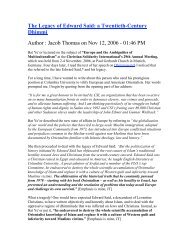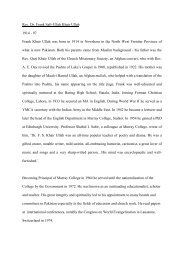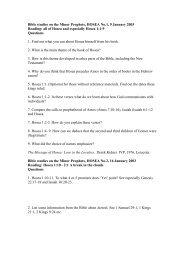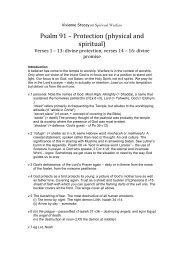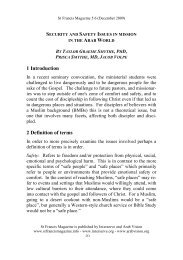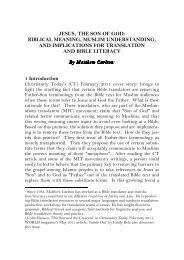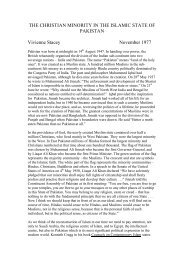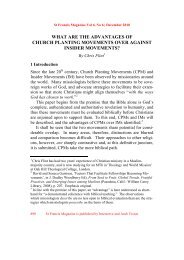download the pdf - St.Francis Magazine
download the pdf - St.Francis Magazine
download the pdf - St.Francis Magazine
You also want an ePaper? Increase the reach of your titles
YUMPU automatically turns print PDFs into web optimized ePapers that Google loves.
<strong>St</strong> <strong>Francis</strong> <strong>Magazine</strong> Vol 8, No 4 | August 2012<br />
church in <strong>the</strong> diaspora. Benedict points out that, “<strong>the</strong>re are two<br />
broadly different kinds of cultures throughout <strong>the</strong> world, shame cultures<br />
and guilt cultures” (Pattison 2000, 54). Shame cultures are<br />
structured around shame, honor and esteem. They promote social<br />
conformity by external sanctions for good behavior. “The emphasis<br />
is upon appearance and conformity in response to an external social<br />
view” (Pattison 2000, 54). Offenses are perceived as against social<br />
mores and punishable through public shame, ostracization and rejection<br />
by <strong>the</strong>ir social reference group. Pattison contrasts guilt cultures<br />
as those where <strong>the</strong> individual has an internalized sense of<br />
wrongdoing and a sense of conscience. Punishment is forensic and<br />
not dependent upon <strong>the</strong> loss of honor or of global stigmatization of<br />
<strong>the</strong> person.<br />
Pattison makes a distinction between acute, reactive shame<br />
which is temporary and limited in its effects which are by no means<br />
all negative, and chronic shame that is extended in time and influence.<br />
Chronic shame, “can cast a permanent shadow over a person’s<br />
life, character, and personality” (Pattison 2000, 83). Most of <strong>the</strong><br />
body of literature on chronic shame and its clinical importance is<br />
written by Americans (ibid, 95). However his conclusion is, “Any<br />
experiences that induce a sense of persistent inferiority, worthlessness,<br />
abandonment, weakness, abjection, unwantedness, violation,<br />
defilement, stigmatization, unlovability and social exclusion are<br />
likely to be generative of chronic shame” (ibid, 108). He goes on to<br />
say, “Perhaps <strong>the</strong> lowest common denominator in all <strong>the</strong> factors outlined<br />
here is <strong>the</strong> experience of human individuals being dishonoured,<br />
disrespected or objectified” (ibid).<br />
Reactions to chronic shame are:<br />
1. Withdrawal. Pattison suggests that withdrawal can be literal<br />
and physical and /or psychological and internal. The<br />
defense mechanism is withdrawal to safety. The withdrawal<br />
response is often accompanied by distress and fear which is<br />
interpreted as depression. My interviews reveal this propensity<br />
of withdrawal in conflict or perceived conflict.<br />
2. Attack self. “The person constantly seeks to be in <strong>the</strong> position<br />
of suffering victim; you are never powerless, alone and<br />
<strong>St</strong> <strong>Francis</strong> <strong>Magazine</strong> is a publication of Interserve and Arab Vision 421




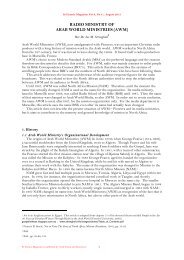
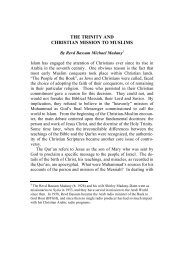
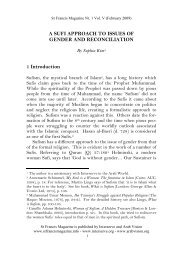
![Reflections on Surah Fatiha and the Lord's Prayer[1] - St.Francis ...](https://img.yumpu.com/49377951/1/184x260/reflections-on-surah-fatiha-and-the-lords-prayer1-stfrancis-.jpg?quality=85)
